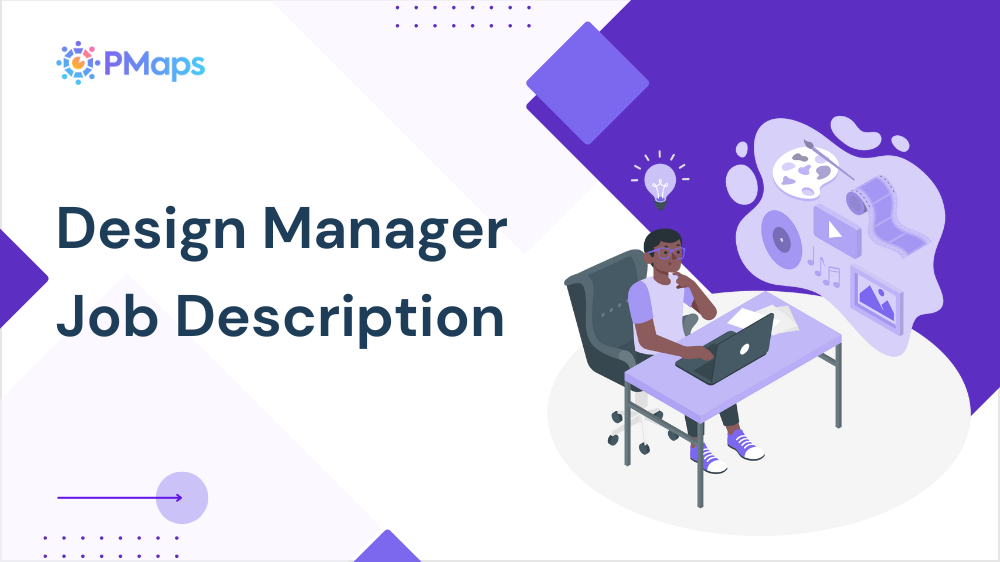
A Design Manager ensures that the visual face of a brand represents their industry and service at its best. The role leads the creative direction and execution of brand projects. It bridges aesthetics with functionality, ensuring that all design outputs align with business goals, user needs, and brand identity.
The Design Manager position description includes managing design teams, handling cross-functional collaboration, and maintaining quality across design deliverables from concept to launch. Whether in digital, product, or retail environments, this role ensures cohesive and high impact design execution.
Roles and Responsibilities of a Design Manager
The Prime Role of Design Manager is to guide the creative vision of the organization while ensuring that design solutions are functional, brand-aligned, and user-centric and also to manage a team of designers, coordinate with key departments, and maintain high standards in execution and delivery. It demands a leader who can balance aesthetics with business value, fostering a culture of innovation and accountability.
- Lead and mentor a team of designers, overseeing project execution, skill development, and performance.
- Develop and implement scalable design systems that ensure visual consistency across all platforms and products.
- Collaborate with product, marketing, and engineering teams to align design initiatives with business and user needs.
- Own the creative review process, ensuring output meets brand, usability, and quality standards.
- Translate business objectives into design outcomes, integrating research, data, and feedback to inform decisions.
pressed by visuals but can they lead? Find out before you hire your next Design Manager.

Objective of the Design Manager Role
The Design Manager role is centered on leading creative vision and translating strategic goals into impactful visual outcomes. This position ensures the design function drives business value by aligning user experience, brand consistency, and innovation across all design touchpoints.
- Define and communicate design strategy aligned with brand and business goals
- Guide the execution of design projects from concept to delivery
- Foster a collaborative, high performing creative environment
- Integrate user feedback and research into the design process
- Ensure consistency, quality, and scalability across design assets
Qualification and Skills for a Design Manager Role
A successful Design Manager blends creativity with leadership and operational efficiency. The role demands fluency in design systems, sharp aesthetic judgment, and the ability to translate business goals into scalable visual solutions.
- Bachelor's degree in Design, Fine Arts, or related field
- 5+ years of experience in design, with at least 2 in a leadership role
- Proficiency in tools like Figma, Adobe Creative Suite, or Sketch
- Strong portfolio showcasing cross platform design leadership
- Experience working in agile or cross functional environments
- Excellent communication and feedback skills
Interviewing a Design Manager or just filling time? Use questions that test strategy, not fluff.

Perks and Benefits of a Design Manager
A Design Manager not only leads creative outcomes but also gains visibility, ownership, and influence across the organization. The role offers a unique blend of artistic impact and strategic leadership supported by career forward benefits.
- Competitive salary with performance-based bonuses
- Flexible work options (remote or hybrid)
- Access to premium design tools and software
- Learning budgets for design conferences and upskilling
- Creative autonomy and leadership on high visibility projects
- Health insurance, wellness programs, and generous time off
- Opportunities to shape brand direction and design culture
Tips for Crafting Interviewing Design Managers JD
A compelling Design Manager job description should go beyond listing tools and tasks; it should reflect your creative culture, expectations for leadership, and the level of autonomy offered. A well structured JD attracts professionals who are both visionary and execution focused.
- Clearly define the design domains (e.g., UI/UX, brand, product) the role will oversee
- Highlight your design maturity mention systems, team structure, or brand guidelines
- Include examples of strategic impact expected from this role (e.g., product launches, brand revamps)
- Focus on leadership scope how much autonomy and mentorship responsibility is involved
- Mention key tools but don’t over index on software; focus on outcomes and experience









